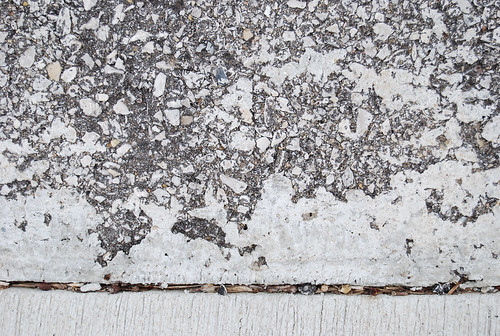Applying Lomo Effect to Photos Using Photoshop
Have you heard about
Lomography? If you have seen photos with weird and crazy colors, then you should probably meet lomographs. In a more vivid explanation, photos with false colors, these make up a whole lomograph.
In the early 90s, a group of students discovered a Russian camera, a bit small and complicated Russian camera, known as Lomo Kompakt Automat. The discovery led to artistic experiment on photography showing their unusual frolic shots. After having their photos mounted on panels to form a thousand of Lomographs, vast amount of viewers were astonished.
Having been introduced to cameras, more specifically DSLRs, I wanted to shoot scenes using one of the lomocams, such as
Holga, and the
Lomo itself. The rules in shooting: Just point and shoot! So easy!
Since Lomocams these days became expensive with the fact that these gadgets use film for developing, Photoshop has been a good tool to produce photos that are lomo-alike. With various resources, I was able to learn applying the lomo effect on digital photos.
In these part, you'll learn the process on how to apply the effect of lomocam, and you'll definitely love how the colors pop out!
1st Step: CHOOSING A PHOTOOpen Photoshop, and choose your photo that will be processed! I'm using this photo I shoot a year ago because, there's a huge contrast.
 2nd Step:THE LASSO TOOL
2nd Step:THE LASSO TOOLSelect the lasso tool (L) and create an oval shape into the photo, set the feather (Ctrl + D) to 80 px. This will soften the edge of the lasso you recently made.
 3rd Step: SETTING LEVELS
3rd Step: SETTING LEVELSInvert the selection you made using the lasso tool. After inverting, select levels (Ctrl + L) and set value just like below. If you got the step right, a part of the photo darkens, and the focus of the light is in the center.
 4th Step: WORKING WITH CURVES
4th Step: WORKING WITH CURVESYou're done with the levels, we're halfway there! Diselect the marquee (Ctrl + D) to proced in the curves. Open curves (Ctrl + M) then create a slanted "S" on the graph just like below: Click preview to make sure that you'll see the temporary output. Click OK.
 5th Step: NEW LAYER WITH BLENDING OPTIONS
5th Step: NEW LAYER WITH BLENDING OPTIONSNow we're done with Curves. The next process takes place in the layers palette. Create a new layer. fill it with black. Notice that the photo below cannot be seen. Change the blending options of the layer to HUE, and reduce its opacity to 30%. Look at the output, it's quite vintage now!
 6th Step: LAB COLOR
6th Step: LAB COLORDo not forget to MERGE ALL the existing layers, in order for you to proceed in this process. After doing so, you have the output of a dull photo now, go to the menu bar, select
Image>Mode>Lab Color. We'll work with the channels now!
7th Step: LAB COLOR LIGHTNESS CHANNELWe are almost done, the next thing to do is to select the
Channels tab in the layer palette, and select the
Lightness channel. You'll see that the photo is now black and white, its ok.
 8th Step: UNSHARP MASK
8th Step: UNSHARP MASKAfter selecting the
lightness channel, in the menu bar, go to
Filter>Sharpen>Unsharp Mask. Since I liked sharp photos, I set the amount on a higher value, 49%.
 9th Step: GOING BACK TO RGB COLOR
9th Step: GOING BACK TO RGB COLORNow we're at the peek of this tutorial, we'll see the final output by selecting back the RGB color, go to
Image>Mode>RGB Color. Poof! You're done.
Here is my final output: Popping and highly contrasted colors
Don't forget to share your output!
Done reading? If you liked my posts, then:Click here to
Subscribe to FREE email updates from "Kristan Franco", you wouldn't want to miss out anything that can be valuable to you and your blog, would you? NZN44DU6HHBT


 Kristan Jan Q. Franco is rooted from General Santos City, and is a 20-year old student of Notre Dame of Dadiangas University. With the course Information Technology, he is into web designing, graphic designs, ads, and photography. Having been introduced into digital tools such as Adobe Photoshop and CSS coding, he began designing variety of graphics in his high school days. When he stepped into college, his interests expanded. With a cheap digicam and a Single Lens Reflex camera, he was engaged into photography and sees it as a hobby.
Kristan Jan Q. Franco is rooted from General Santos City, and is a 20-year old student of Notre Dame of Dadiangas University. With the course Information Technology, he is into web designing, graphic designs, ads, and photography. Having been introduced into digital tools such as Adobe Photoshop and CSS coding, he began designing variety of graphics in his high school days. When he stepped into college, his interests expanded. With a cheap digicam and a Single Lens Reflex camera, he was engaged into photography and sees it as a hobby. 






















































